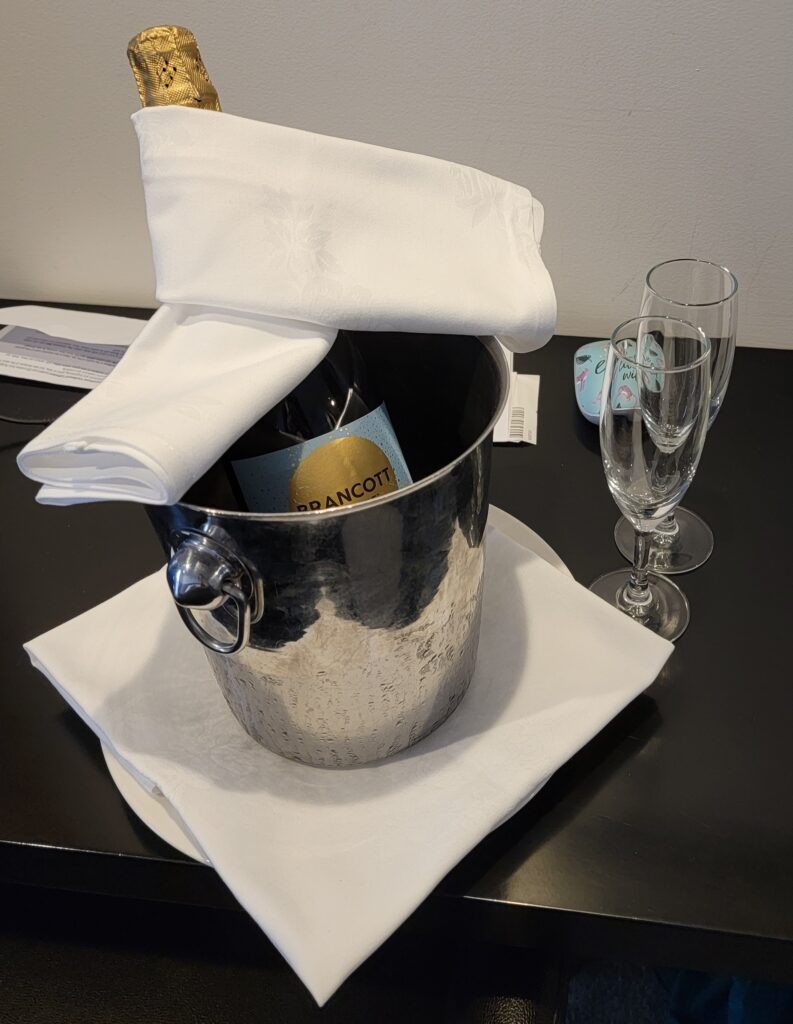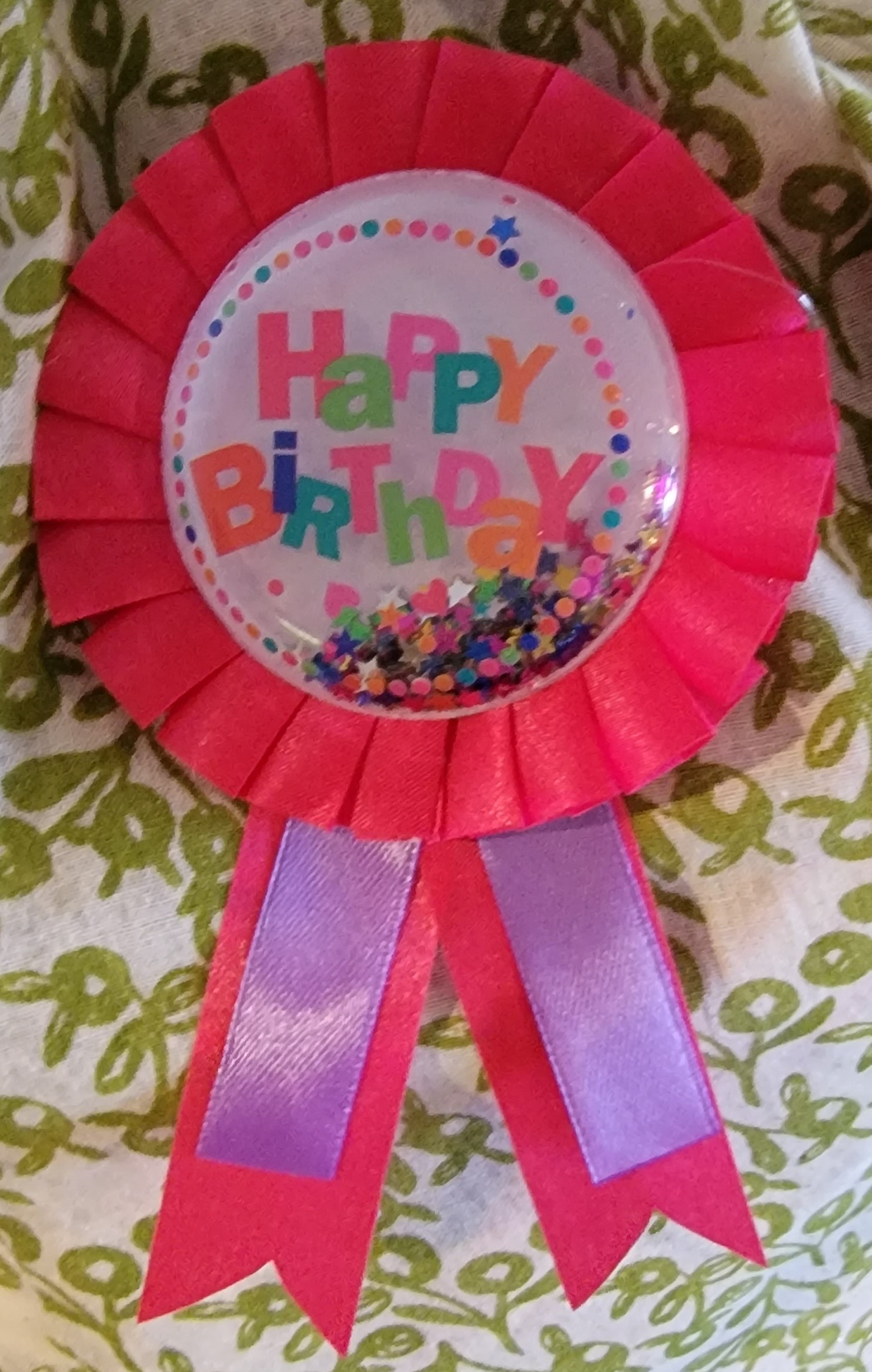
Our breakfast today at the hotel definitely highlighted the fact we are in the “breadbasket” of New Zealand.
It included an actual full honeycomb just pulled out of the hive, plus gorgeous yellow new cream.
This reminded me of when I lived in England – the milkman would bring you your bottles of milk in the morning, but you had to put a board out. Why? Because the milkman would put it on the top of your bottles – if you didn’t, the crows would peck through the foil caps on the bottles and suck the cream top off your milk!!!
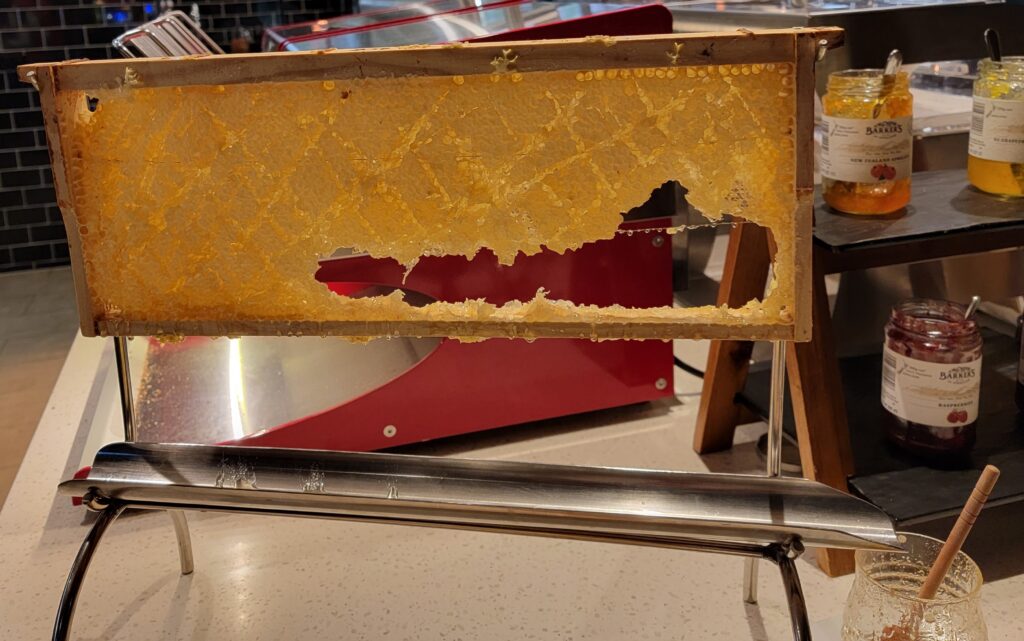

We got out at 9:00 a.m. to do a bit of walking near our hotel before getting on the bus to head to the sheep station.
The first place we went was the “transitional” cathedral. It is all (Christian) denominations, because so many churches were destroyed by the earthquake. The interior of the church is made of cardboard! I couldn’t get over it! And the entire thing – which seats 700 people – only cost $5 million to build.
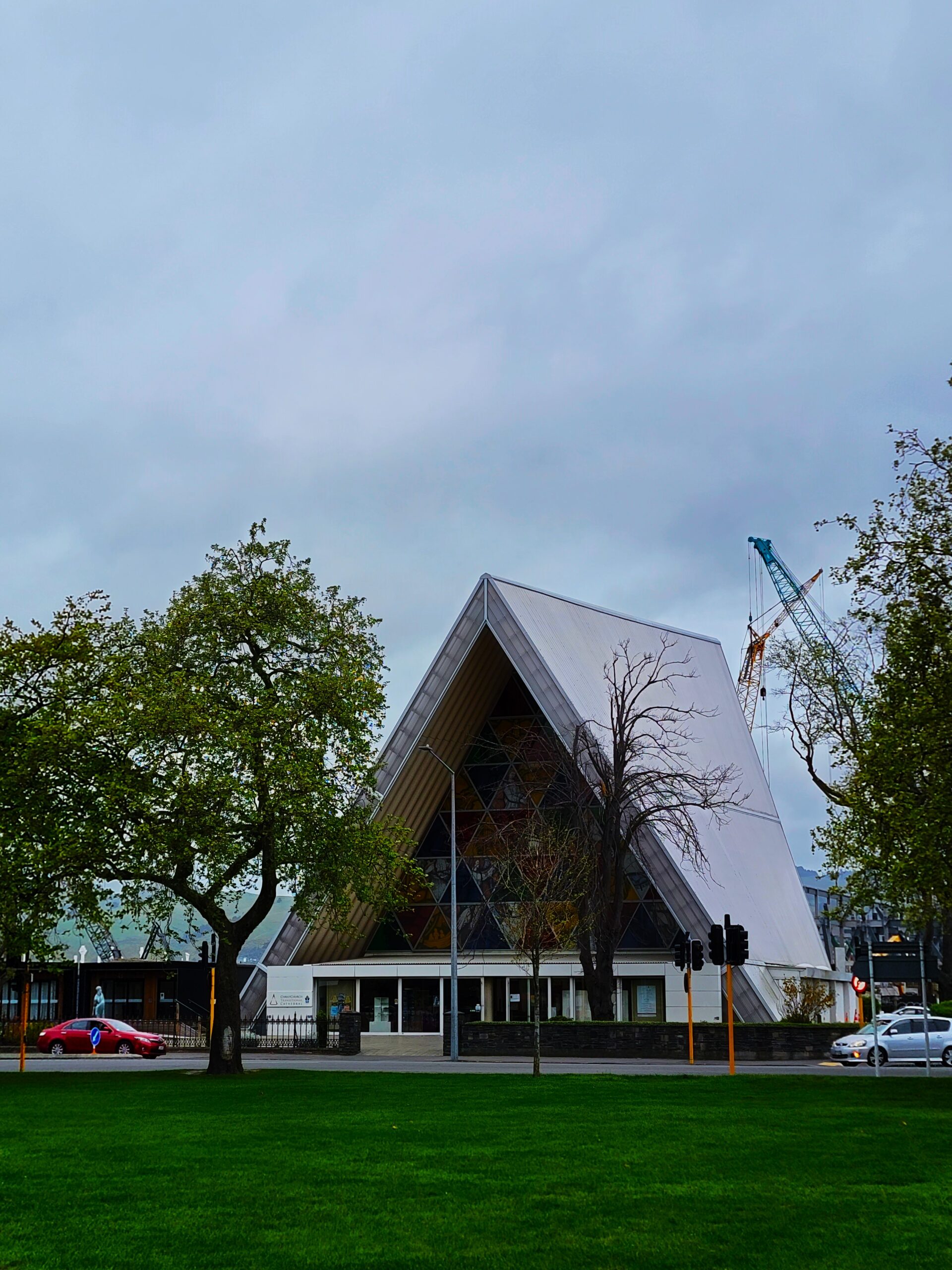
The story goes that a few weeks after the earthquake, a Cathedral staff member saw an article in a design magazine about an “emergency architect” called Shigeru Ban. After the Kobe earthquake, he had designed a cardboard church to replace one that had been destroyed. He was invited to Christchurch and offered to do the same for them. It’s not just made of cardboard – it’s cardboard, local wood and steel, with a polished concrete floor and a polycarbonate roof – but mainly waves of cardboard tubes, that draw your eye and attention upwards and forward.
More about its fascinating history is HERE. (The crane behind the Cathedral is building the new sports center.)

On the way, we walked through a park with this sculpture.
It’s hard to tell in the picture, but it’s floating in the air, suspended on guy-wires.
It represents the spire on the steeple of the Cathedral downtown (that we saw yesterday). People come and picnic under it and often remember the earthquake and the victims.

I always light a candle for my grandmother Tutu.
However, there weren’t any matches!
So I had to “go walkabout” and find someone who had them!
(I wound up finding a guy at a computer behind an office door – he was chagrined he’d forgotten to set matches out.)

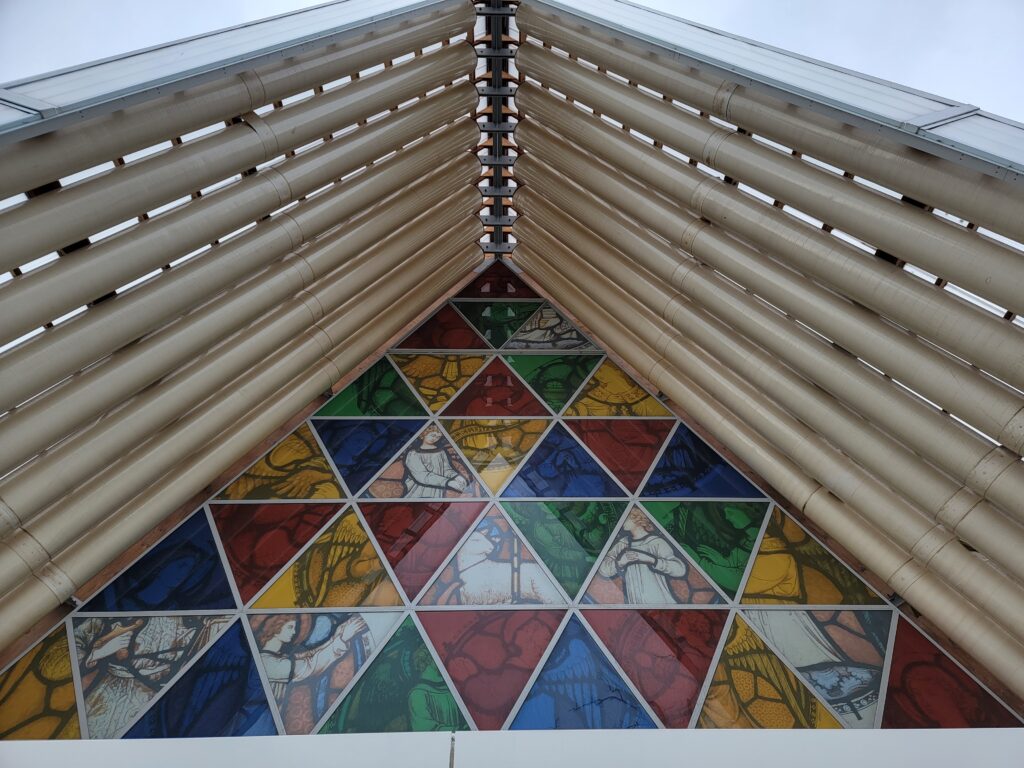

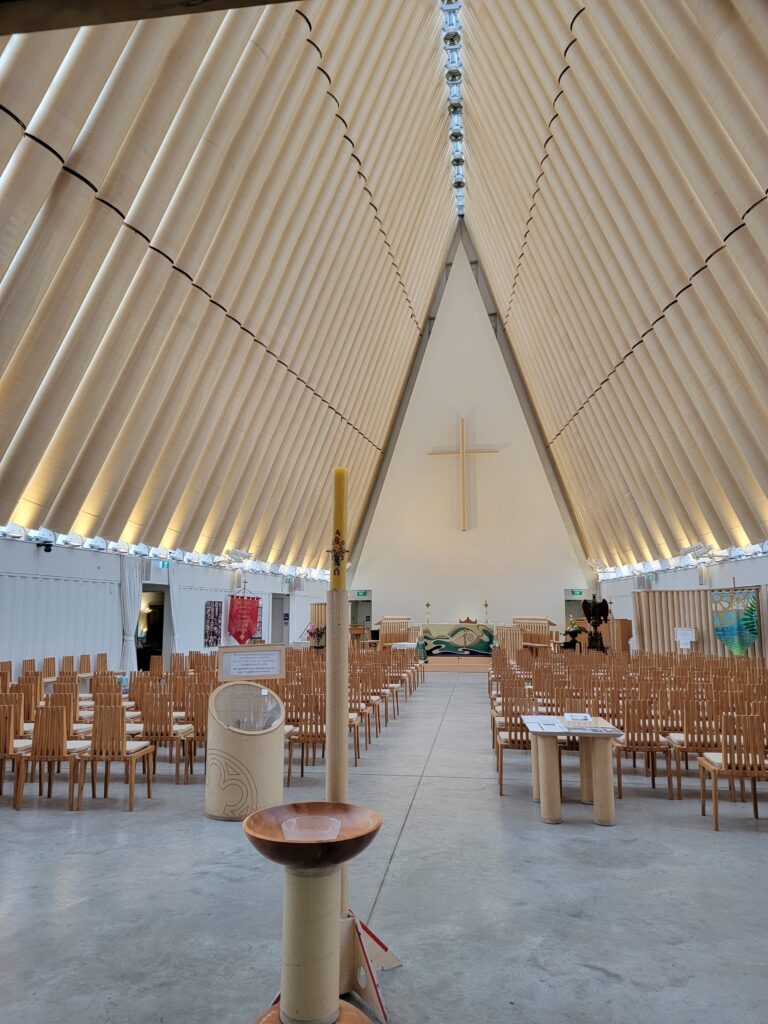

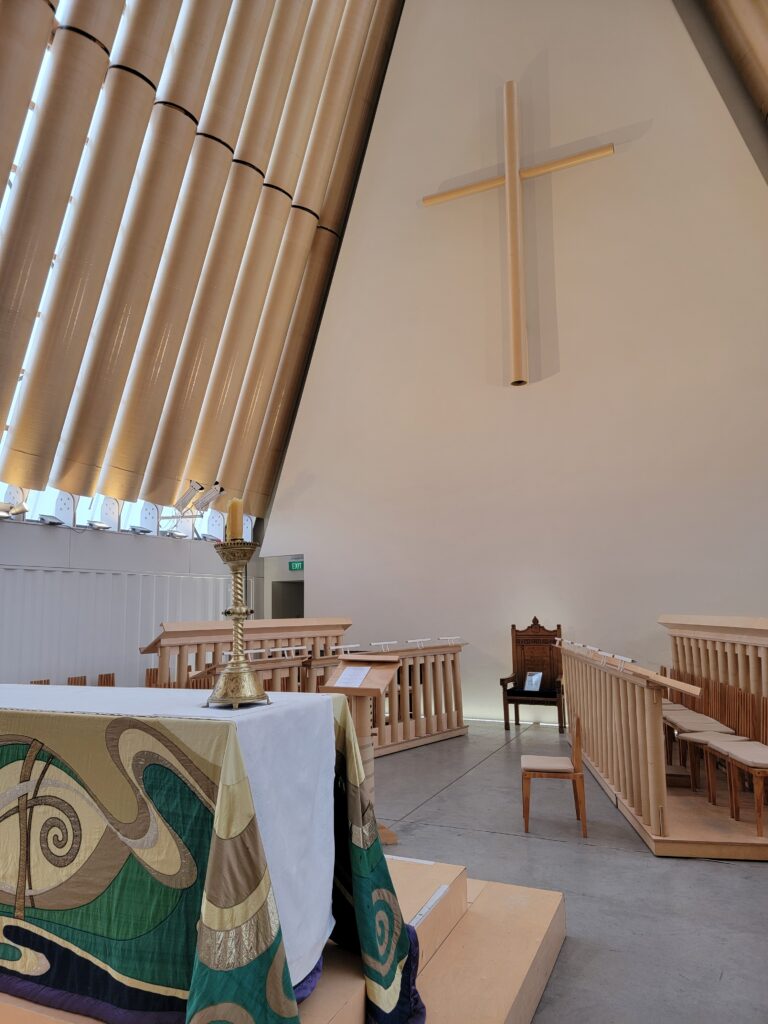


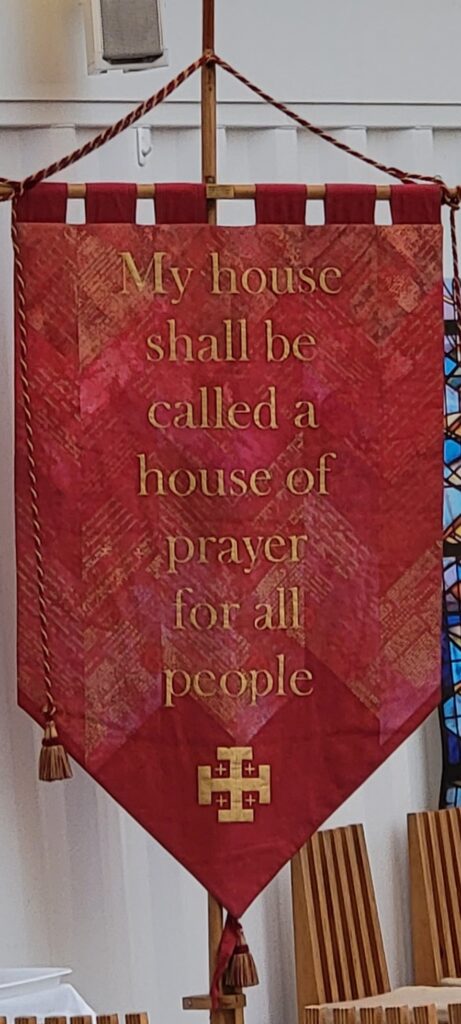
Next we headed over to a park where the CTV Building used to be. The CTV Building housed Canterbury Television as well as an education languages school, a medical center, and several other offices. On 22 February 2011 just before 1:00 p.m., the 6.3 magnitude earthquake collapsed the CTV Building. 115 people who were in the building died – 61% of the total 185 deaths – and many many others were injured in the collapse.
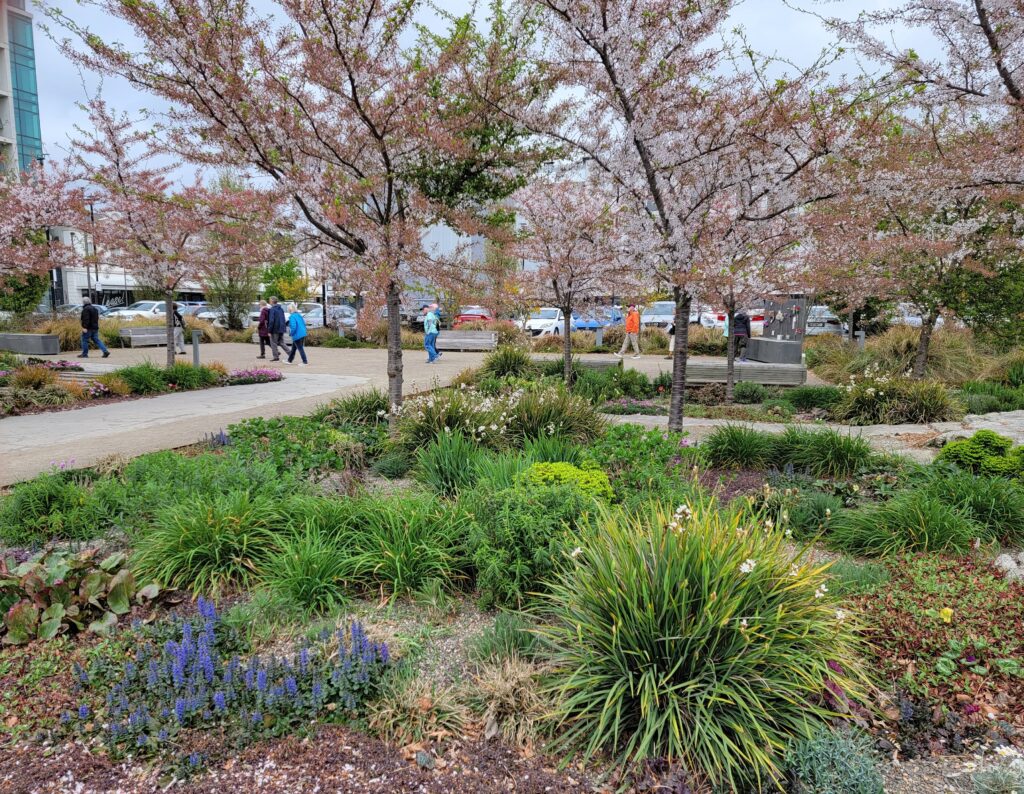
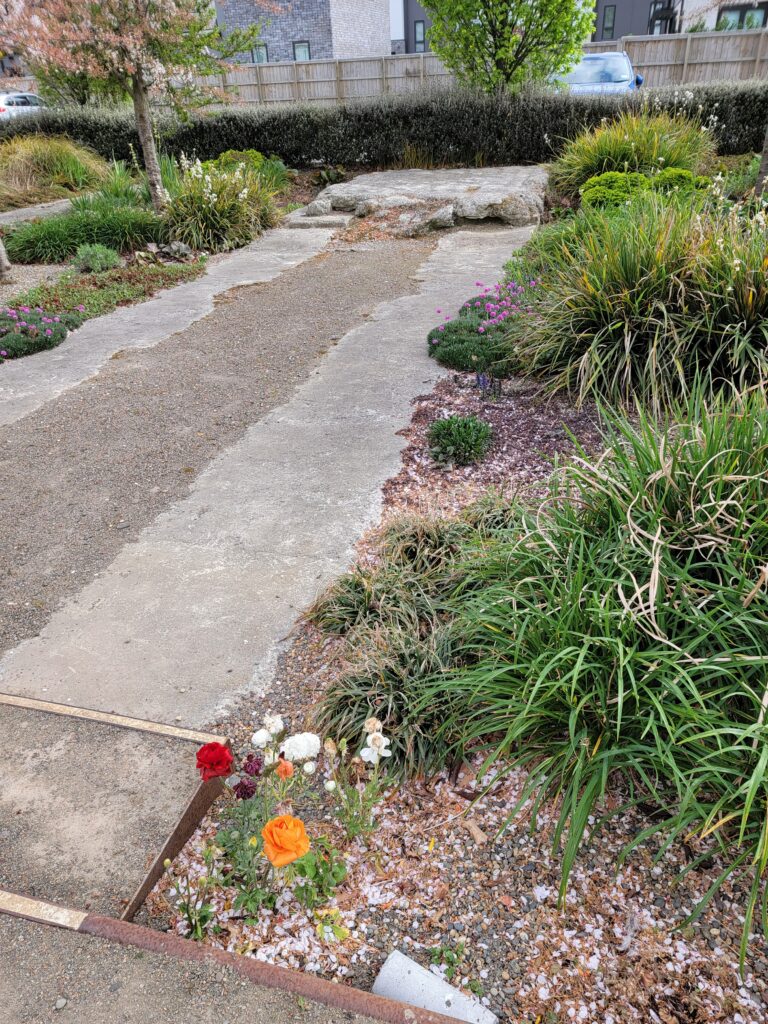
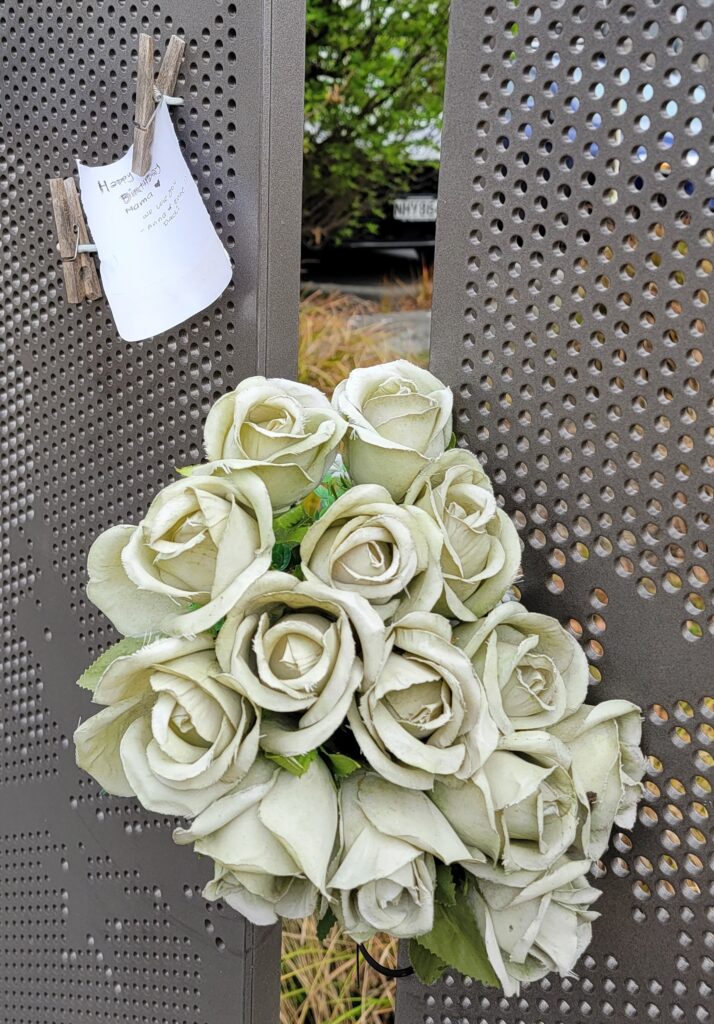
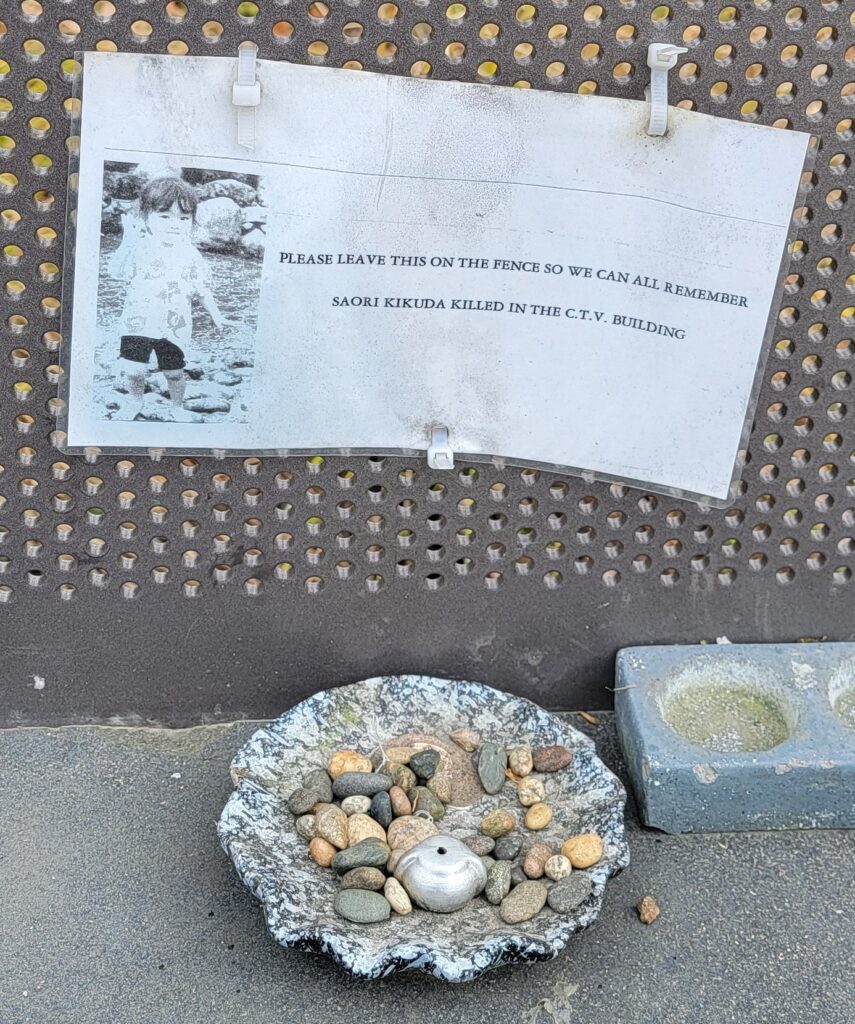
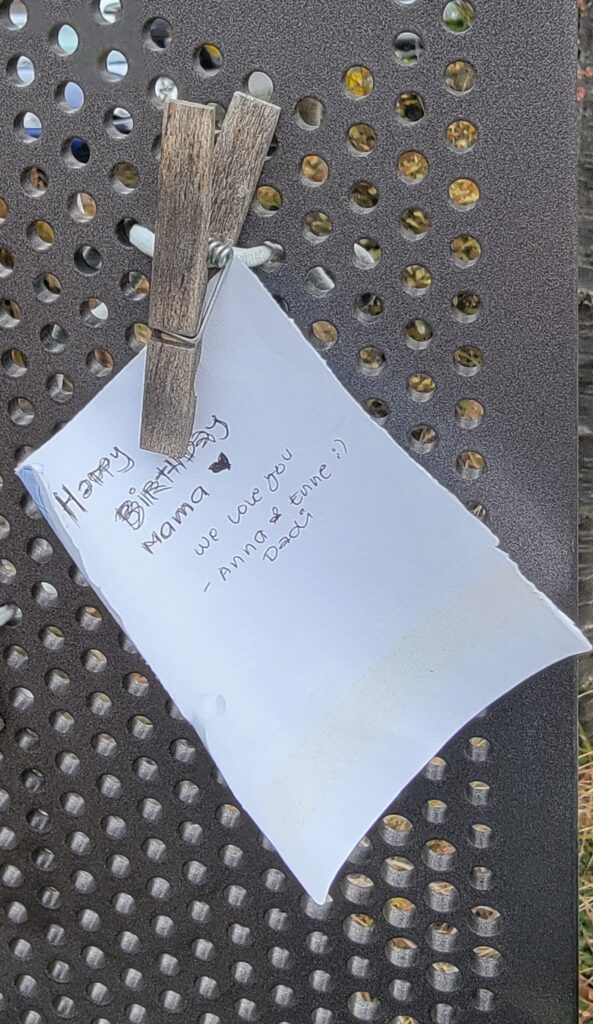
The people who lost their lives were not just from New Zealand, but from Japan, Malaysia, China, Turkey, Philippines, etc. This garden was completed in 2018 to reflect the thoughts and wishes of bereaved family members as well as those injured in the collapse. There is a wall upon which you can place your memories and thoughts.
I thought this might be a piece of the CTV Building, but it’s a piece of the Berlin wall! The murals change periodically.





And off we went after our walk to the sheep shearing station. We learned so much from Chris and Dell! Luckily, we were mainly under cover, as it was raining (but not snowing, as had been forecasted!)
Chris had two border collies, which as we all know are silent, “visual” dogs, plus a “huntaway” dog, which barks at the sheep and gets them moving fast. I’ve never heard of a huntaway, but boy could she bark and boy, did those sheep run!
Jim (of Jim and Marilyn) from our group was chosen to be the “helper,” and was taught how to sort the sheep using a gate that swung one way if you wanted the sheep to go back out into the field, the other if you wanted to pen them.
He did great – he didn’t let any of the sheep that we wanted to “keep” out on the field, just “penning” one wrong one.
This was, of course, after the main border collie (not the one “in training”) had gotten them into the first pen to begin with.

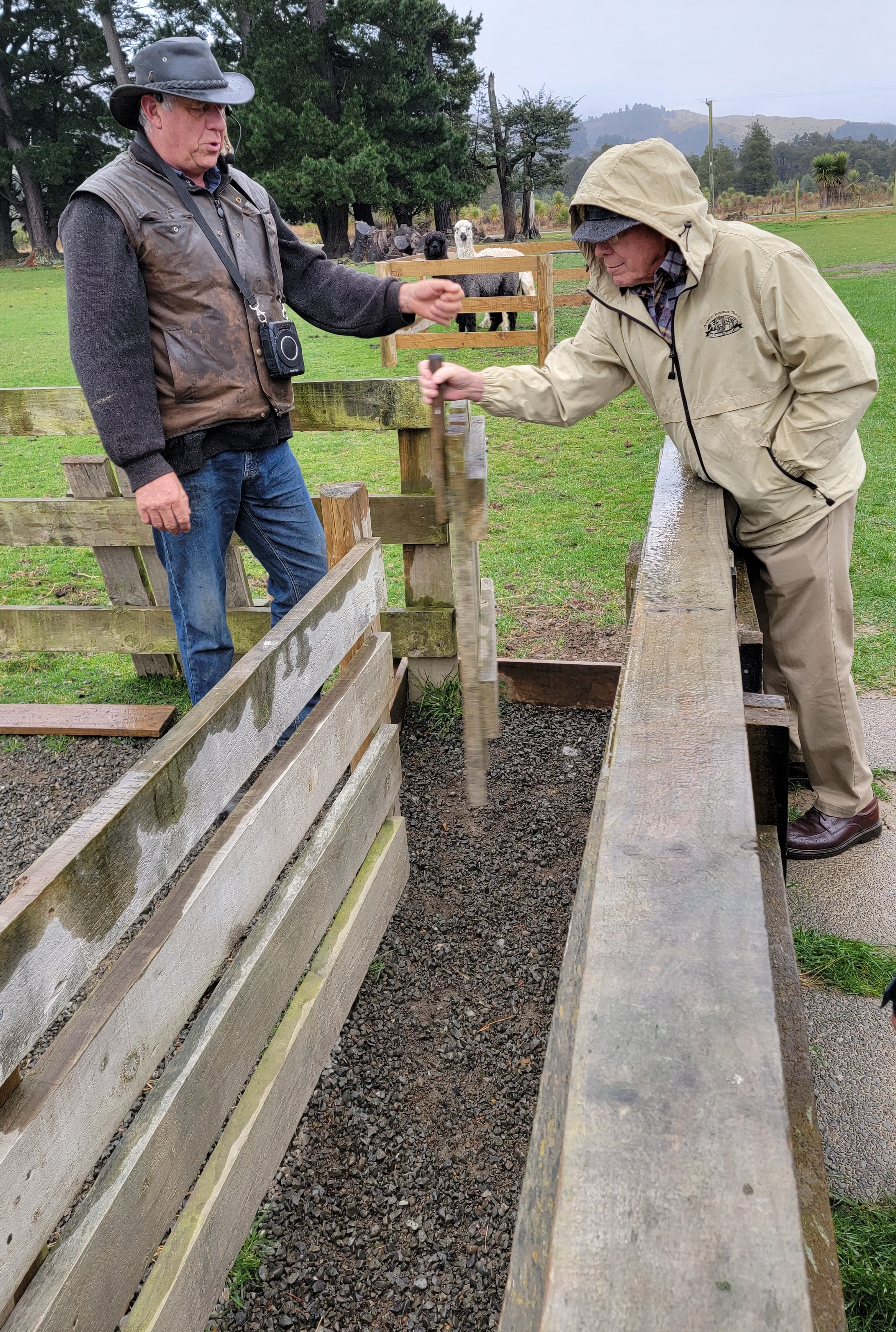
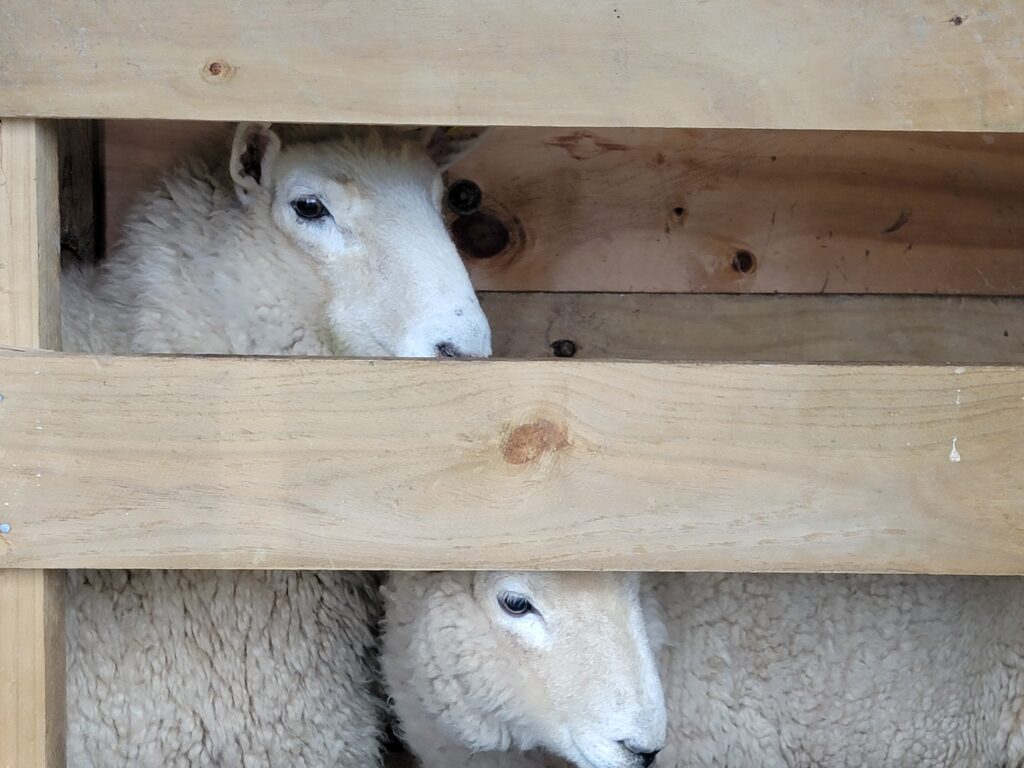
The sheep that were used in the demonstrations were Romney Sheep. They are “rug quality” sheep, with their wool running about 28-32 microns. It’s very sturdy – but super itchy – wool.
The demand for wool is way down in both clothing and carpeting. It’s been supplanted by plastic byproducts of various and sundry. However, sheep need to be sheared for their health – if they aren’t shorn, the wool gets too wet and heavy, which can lead to infections and such. Interestingly, wild sheep only have about an inch-long coat – and they shed their wool. So this “problem” is a man-made one.
Unfortunately, 45 years ago, you could get $7-9/kilo for wool (a sheep generally gives about 3) and paid about 85-90c to have the sheep shorn. Now, you get $1 a kilo, and it costs $3 to the shearer to have the sheep shorn – so, no profit!
However, 40 years ago, you’d receive $10-11 to export lamb – now, it’s about $110. So the sheep you see are mainly ewes, used to lamb. Males are always sold for meat, whereas some of the females will be kept to increase the flock.
A mother sheep is shorn before lambing – the ewe that Chris sheared for us was very pregnant. The reason it’s done this way is that the ewe then gets cold in the rain/bad weather and will head for cover – and the lamb will follow her. Unfortunately, sheep aren’t the greatest mothers, so if you don’t shear her before she lambs, she won’t be cold/need to head for cover, and the lamb will be out in the elements with her, which it can’t withstand.
We learned about the different types of wool from Chris. For example, merino wool is from merino sheep, which are smaller and live in high, arid country. Their wool is only about 18-19 microns, so not itchy – but also not for carpets or strong socks, as the fibers will break. Romney wool is strong for socks, rugs, outside sweaters (with a shirt underneath), but, again, itchy. You can’t raise a merino where the Romney can be raised – the weather is too wet and they get foot rot, plus they aren’t used to such green, abundant grass, and they get too fat. The Romney is a “tough sheep with a big engine,” perfect to raise in the area where we were having the demonstration.
After five years, a sheep isn’t profitable. They grow 2 teeth a year (bottom teeth only) until they’re 4 years old. After that, the teeth wear down, so they can’t eat enough and can’t feed their lambs milk properly. Sheep can live longer – the problem is, their teeth won’t.
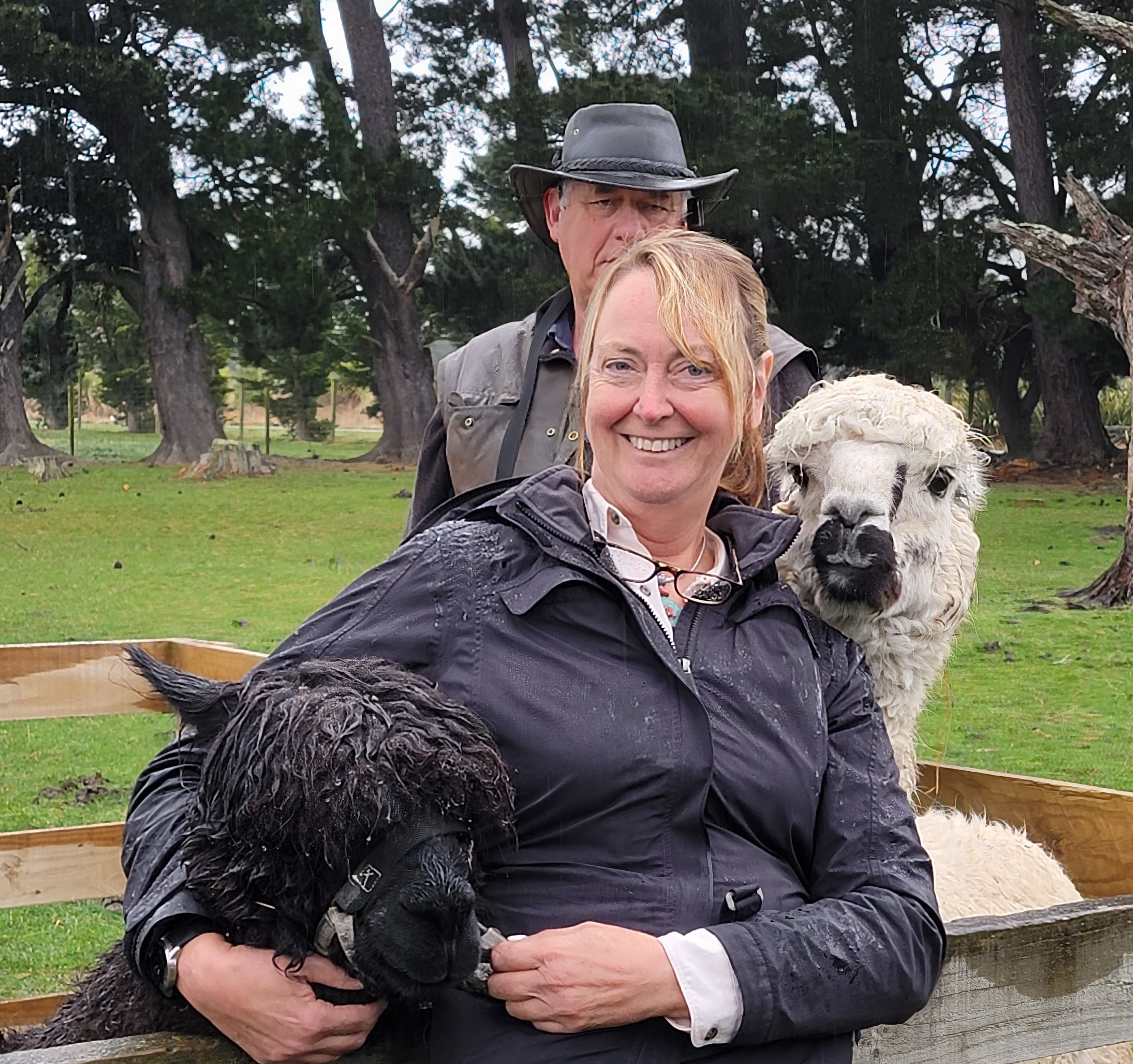
Then we learned about alpacas. Alpaca wool is a cottage industry. You get about 14 kilo per alpaca, however, it’s not like sheep where the wool is basically the same all over. The “saddle” area of the alpaca is 19 microns of fine wool (about a kilo), but the rest the wool is far less fine at about 30 microns. As you can see from the picture, he has a black and a white alpaca. Because the wool is colored, you have to wash and card it separately by hand, which is difficult and expensive. Chris just gives it away to “cottage spinners” and if he can’t give it away, he puts it out in the garden or burns it. Alpaca don’t spit like camels or llamas (I was actually afraid of that, but – nope).
Formerly they packed duvets with wool and sold them (because the color didn’t matter) and they were warm like a down comforter. However, they have moved away from that because – again – duvets are generally now filled with an acrylic – similarly warm and less expensive to produce.
Another issue is that black wool can be black/black, brown/black, blue/black, or grey/black. If you happen to want to make something from natural alpaca wool, first, you just want that “saddle” area, second, to get enough, you have to stick with the same animal! And sometimes that doesn’t even help, as if the animal is out in the sun, the wool will bleach from black to a brown.

Black wool doesn’t pick up the dye – so that’s why merino sheep -which were originally black – were “modified” over time to be white. Even if there is a small black spot anywhere on a lamb, it will be sold for meat early, as you don’t want this recessive gene in your gene pool. Chris explained it this way: Imagine that you have a pile of wool, and it has even a tiny bit of black wool in it. You die the white wool pink, to make pink sweaters. But the black wool won’t take the dye. So you wind up with a sweater with a teeny tiny bit of black in the weave. Would you buy that sweater? No.
However, this is a 4th generation farm, and for the first time, there are two black sheep that currently won’t be slaughtered, because the “4th generation wife” wants to spin and weave it. So it is hand shorn away from all the other sheep (so the black fiber won’t get mixed in). But this is almost like having “sheep as pets” which is not “the thing” on a farm. As Chris said, for example of his dogs, “they are better than pets – they are tools.”




The floor of the shearing shed is varnished, so that the sheep will slip if they happen to get away. As sheep’s wool has lanolin in it (which makes them slippery already), with a grippy floor, a shearer wouldn’t stand a chance. I took a number of Marco Polo videos of our day out in the paddock, sheep shed, etc. and sent them off – but won’t download them here. Chris did the bulk of the shearing with the electric clippers, that (as you can see), take all the wool off. He also showed us using the metal “sheep shears,” which actually don’t clip down so close to the skin, leaving a bit of the wool on the sheep for warmth.
So are there better ways to get wool off sheep? They tried at one point to have an injection that would make the sheep just drop the wool. But it would take 10-20+ days, and if you didn’t time it right, you’d find wool all over the field and naked sheep standing around. To remedy that, they decided to put nets on the sheep (truth! I asked because honestly I thought he was joking with us). However, then (once the sheep “blew its coat”), you had to unwind the wool from the net. Too time consuming. They also tried robots, but they would cut “bits of the sheep that weren’t mean to be cut” if the sheep squirmed. So, shearers it is.
Chris could shear by the time he was 12. You start off giving the child a little bit to do (like the last bit on the leg), then from there more and more. He went from being on the farm to being a cop for 20 years because “it was way too hard being a farmer” – then once he’d retired, he came back to have a farm where he could educate people about farming, but he doesn’t (for example) raise the sheep, he “borrows some” from the neighbor for demonstrations, etc.
We went in after our demonstration to a delicious “shearer’s lunch” of lamb, fresh bread, salad, corn, fruit, egg salad, potatoes, tea/coffee. One of the “jams” was a delicious “apricot and capsicum” spread – unfortunately, made fresh and not for sale!
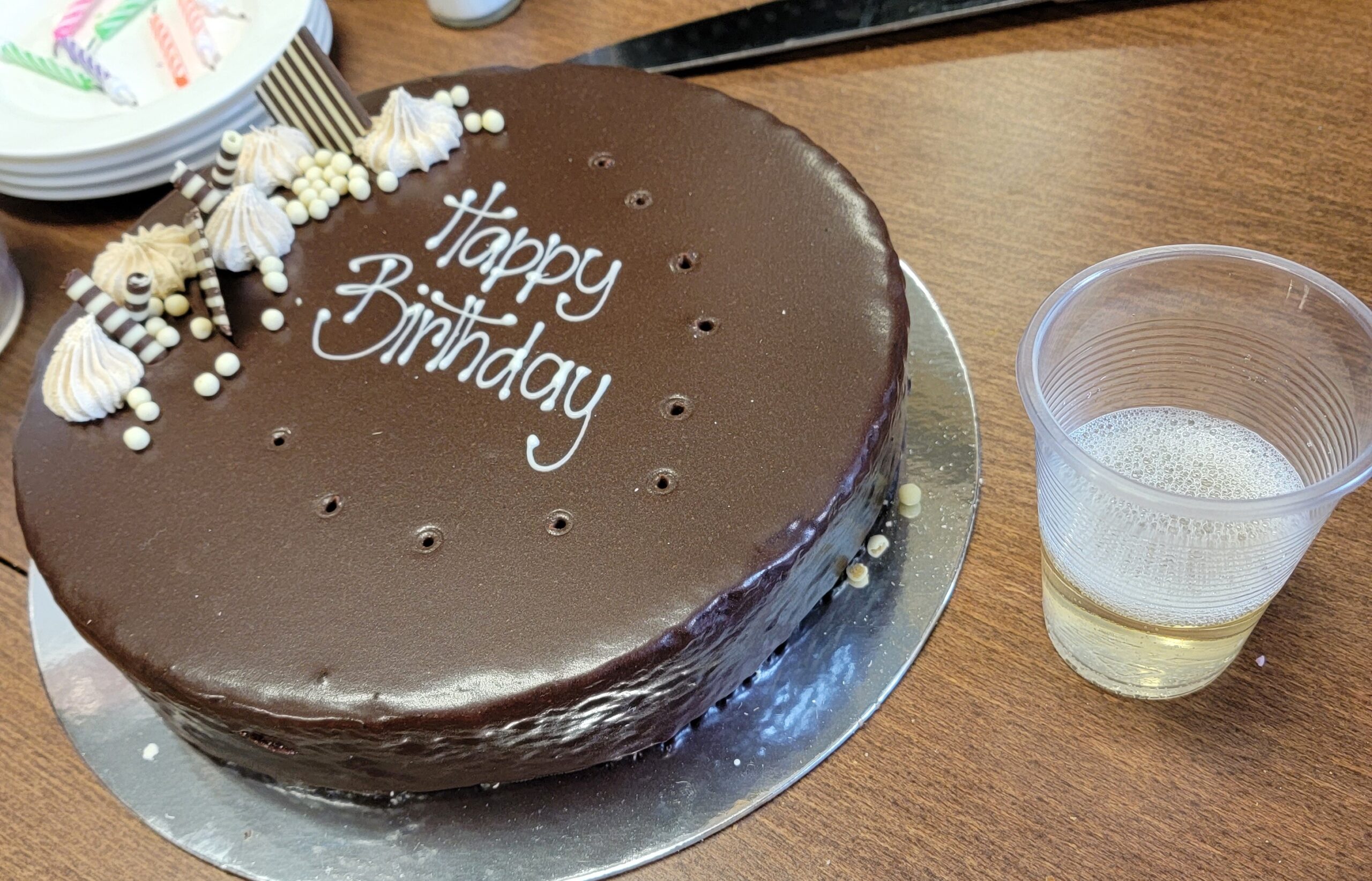
But the big surprise was Happy Birthday To Me! Rod had given me a birthday “medal’ to wear for the day, but I was surprised by a big card signed by everyone, fancy New Zealand champagne in not-so-fancy glasses (“for the sommelier”) and a delicious Sacher torte-type cake! We did the “COVID candles routine” where I had everyone take a candle and make their own wish, so as not to blow them out “on the cake” – and raised a toast with the champagne to Chris and Dell, Rod, Tony our driver, and to my “Whanau.” 😊As you can see, I was so surprised I didn’t even have the presence of mind to snap a photo until I had taken the candles off!
I bought some wool from Dell, because one of the gals forgot her cap and has been borrowing mine, and I thought it would be kind of fun to make her one. She apparently was in New Zealand before and said she “left her New Zealand-branded warm cap” at home by accident. But she was teasing it was probably actually “Made in China”. So Dell was kind enough to give me a crochet hook, and I bought the wool to make her a real New Zealand hat. 😊I also got myself a wool coffee “cosy,” and then got a present for my Mom that I think she’s going to love. This time – I’m not telling!!!
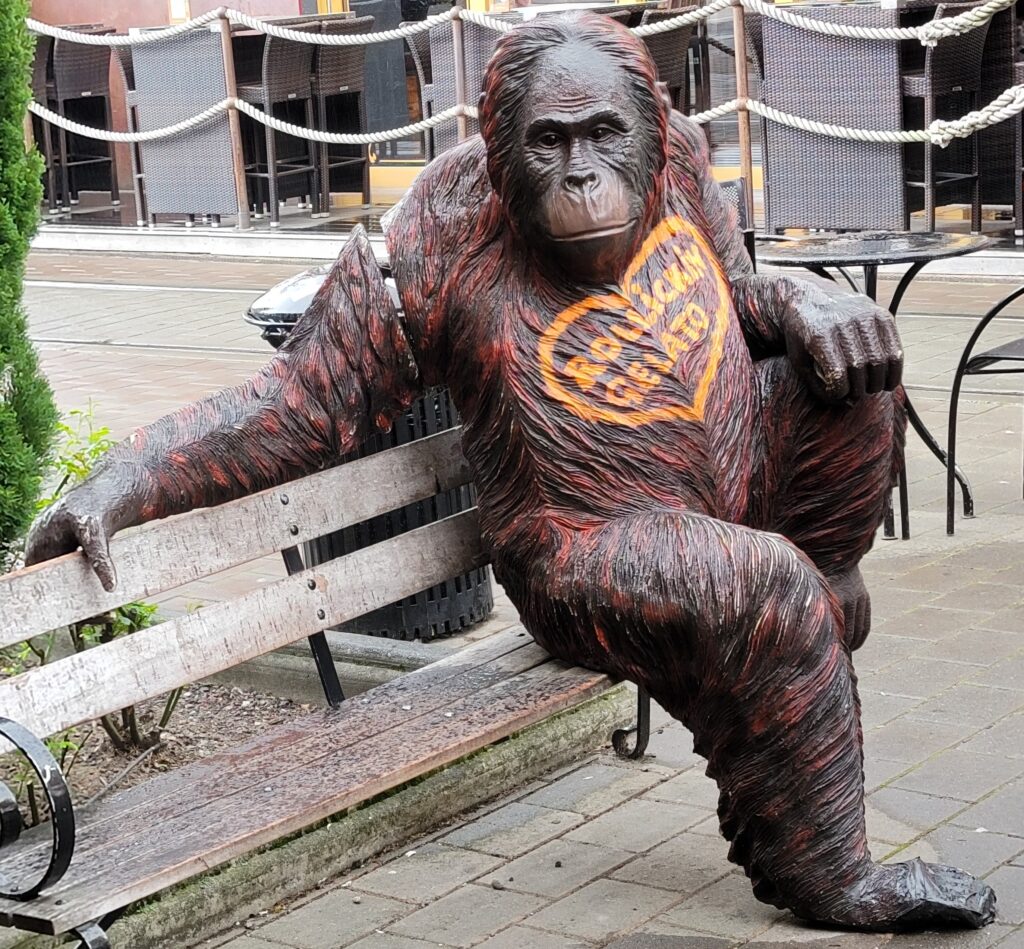

Once we were back in Christchurch, Lynn and I went to get gelato at the best place in town per Rod – we got a “hokey pokey” which is the one with chunks of honeycomb. NOM NOM.
Unfortunately, New Zealand food is amazing. I’m going to roll home.
And then, as a final capper, champagne in our room! What a day!
If you want $100 off, call OAT at 1-800-955-1925 and request a catalog, tell them you were referred by Sandy Shepard, customer number 3087257, and get $100 off your first trip!

